Natural ingredients suppliers are arguably some of the most knowledgeable folks about natural products. They are, literally and figuratively, the source of the industry and its inner working gears. In this article, several suppliers offer insight into some of the most important issues affecting our industry.
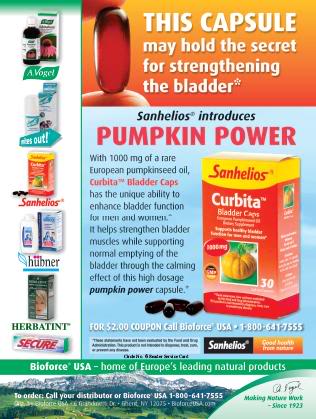 Enabling Labeling
Enabling Labeling
Along with taste and price, certain label claims are driving sales in the food category. Products with language that includes gluten free, organic, eco-friendly, cruelty free and vegan, to name of few, are flying off shelves faster than ever before. This trend is lead by "Cultural Creatives," says Bob Green, president of Nutratech, Inc., West Caldwell, NJ. These are "consumers who believe that success is predicated on what they give back to their families, their communities, the environment and the world at large. They're looking for products that are more natural and
environmentally friendly," says Green.
Consumer interest in food products with "clean labels" is drawing parallel buying in the dietary supplements arena. Gluten-free and organic supplements, for instance, are becoming more in demand. One can see this consumer interest at work with some numbers provided by George Pontiakos, president and CEO of BI Nutraceuticals, Long Beach, CA: "We've grown our organics line from four products in 2007 to over 125 in 2009. So, obviously the interest is growing and there's a business justification for it."
Doing Whatever it Takes. Don't think that procuring organic or eco-friendly ingredients is a piece of cake. Helping manufacturers achieve high-profile labels necessitates some extra diligence from suppliers. "All such requests have required the material suppliers to ask more questions and require more documentation to verify the ingredients they are sourcing," says Harold Fox, director of sales for National Enzyme Company, Forsyth, MO. "This has added a level of scrutiny that would not be there if not for these consumers' requests."
Organic, for example, can be especially tricky because crop fields may not be strong and the acreage for organic crops may not always be available. "Even on the wild-crafted side, a lot of the land that was originally wild-crafted organic was decimated because of the building boom," Pontiakos points out.
To meet this need, companies are partnering with growers that can ensure sustainable production of materials that meets certain labeling requirements. For example, the Garcinia cambogia in InterHealth Nutraceuticals' Super CitriMax weight management ingredient is wild crafted by native farmers in Southeast Asia. "This form of cultivation not only is guaranteeing income to the local farmers and supporting the local economy, but it is done in a way that will not harm the environment or cause soil erosion, leading to further environmental destruction," says Paul Dijkstra, CEO of the Benicia, CA-based company. "Sustainability has become a serious consumer concern in recent years and has been driving a trend towards renewable sources of raw materials. Consumers feel better knowing that their purchases will not have any negative impact on the sustainability of any plant or animal source."
|
When Is a Supplement a Supplement? |
BI also places an emphasis on good grower relationships. "We're now working with the grandsons of growers we established relationships with years ago…We make sure the growers know that we want the top cut and that they make accommodations for sustainability so we have crops for next year…It's a very detailed process that we go through." To ensure ingredients meet its standards, Pontiakos says BI educates growers on everything from crop rotation to fertilization. It also owns a factory in China to better manage the source of its offshore-grown materials. "We source from 35 countries and we visit every location and develop a relationship with the agricultural producers. Otherwise, you don't know who you're doing business with," says Pontiakos.
Another company that closely manages its supply is Cyanotech of Kailua-Kona, HI. Bob Capelli, vice president of sales and marketing, says the firm makes sure its products are grown in a Biosecure Zone, where it is illegal to use pesticides or genetically modified organisms (GMOs). "I don't know of any other company supplying ingredients to our industry that can say this," he states.
Suppliers are also going above and beyond by obtaining certain certifications that spell quality. Great examples are kosher and halal. The upswing of kosher buying may be attributed to consumers' belief that such products are safer and of a higher quality than non-Kosher items. Market research firm Mintel stated in a report on the topic, "Religion and religious traditions are not the major drivers of the sacred food industry. Rather, consumer concerns about the integrity of the food supply and quality of the food they buy inspire the majority of sacred food purchases" (1).
Green of Nutratech has seen this trend first-hand with his company's all-natural Advantra Z bitter orange ingredient. He explains that his firm goes through a lot to ensure a high-quality product (e.g., complying with good manufacturing practices, "vigorously" auditing suppliers, maintaining strict quality standards from suppliers and inspecting suppliers' factories to ensure ingredient authenticity, purity, potency stability and more). These types of quality controls were critical for obtaining KOF-K kosher and Parve (non-meat or –dairy) certifications, Green says, attributing these certifications and their quality/purity standards to the ingredient's success: "We've had double-digit growth every year since Advantra Z was introduced."
While Kosher certification denotes "a high level of hygiene in the manufacturing process," Green states that Parve labeling meets the needs of those with special diets. "The Parve certification is particularly useful for people with food allergies, vegetarians and vegans because it certifies that the product is completely dairy/casein free," he explains.
National Enzyme Company, Cyanotech and Biothera of Eagan, MN, also have decided to obtain kosher certification for many of their ingredients offerings in part because of consumer interest.
Growing Greener Ingredients. Finished goods manufacturers not only are interested in partnering with suppliers that offer materials for a "clean label"; they want them to back it up by being as green as possible. In answer, suppliers are creatively doing their part to green the supply chain. BI, for example, recently reduced its pallet size to save wood (an estimated 750,000 pounds per year). By shaving one inch off the box's height, the company can stack its shipping pallets two boxes high and eliminate the need for one wooden pallet for every 450 kg of finished goods shipped.
National Enzyme Company also has a program in place called, "Live Responsibly," that focuses on eco-friendly methods and personal health and wellness. "The aim of the program is to first educate internally and then initiate progressive action toward improvement," explains Judah Fansler, marketing and design manager. "For example, during Live Responsibly's kick-off last fall, we distributed reusable shopping bags to every employee after discussing the plastic bag waste problem."
Jeremy Moore, director of marketing and strategic development with Stratum Nutrition, St. Charles, MO, notes that his company is making an effort to market ingredients that have a strong foundation in sustainability and animal welfare. One innovative ingredient from ESM Technologies, LLC, Carthage, MO, is made from eggshells that would otherwise be discarded. "Reducing waste is what led us to look to eggshells as a source of nutrients for the dietary supplement industry," says Micah Osborne, president of ESM Technologies, LLC. "Just in the United States, there are over 600,000 metric tons of waste eggshell s generated annually by egg breakers. The egg breakers' primary business is to sell egg whites and yolks into the food industry. Normally, the eggshells coming from breakers are land-filled or spread onto fields."
s generated annually by egg breakers. The egg breakers' primary business is to sell egg whites and yolks into the food industry. Normally, the eggshells coming from breakers are land-filled or spread onto fields."
ESM Technologies separates the membranes from the calcium-rich shells and uses them to make their proprietary NEM (Natural Eggshell Membrane) and ESC, "two products that are extremely relevant for human joint and bone health," says Moore. In addition to the environmental benefits, the products have a positive impact on social and economic sustainability. "Development, manufacturing and marketing of the products at fair market prices help to create new jobs in our local communities," he explains.
The Reality of Innovation. As previously mentioned, giving manufacturers what they want requires a little extra diligence, some creativity and some innovation. Nonetheless, there are times when offering a certified organic material, for example, is not yet possible with today's technologies and market demands. For example, Mike Smith, vice president of Specialty Enzymes and Biochemicals Co., Chino, CA, points out that there are no certified-organic enzymes under the terms of the National Organic Program. But, he explains that organic finished products and those bearing the U.S. Department of Agriculture organic seal can still include enzymes: "The National Organic Program does allow the use of enzymes from non-GMO sources to be used in food and beverage processing. The amount of the enzymes cannot exceed 5% and in actual usage is less than 1%."
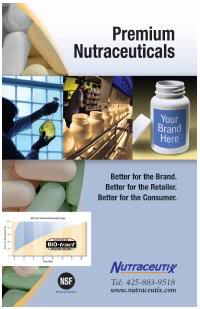 Enzyme suppliers, like Specialty Enzymes and Biochemicals Co., that cater to organic products makers ensure the source is non-GMO. "Most are derived from plants, fungi or bacteria. Plant enzymes are extracted (bromelain from pineapple stem and papain from papaya latex). The fungal and bacterial enzymes are derived by fermentation. All of the plant, fungal and bacterial enzymes are suitable for vegans, are cruelty-free and eco-friendly since they are biodegradable," Smith explains.
Enzyme suppliers, like Specialty Enzymes and Biochemicals Co., that cater to organic products makers ensure the source is non-GMO. "Most are derived from plants, fungi or bacteria. Plant enzymes are extracted (bromelain from pineapple stem and papain from papaya latex). The fungal and bacterial enzymes are derived by fermentation. All of the plant, fungal and bacterial enzymes are suitable for vegans, are cruelty-free and eco-friendly since they are biodegradable," Smith explains.
Small volume requests for unusual vegan or organic materials can be especially challenging. "The biggest challenge with this is that these requests often involve significant shifts in sourcing and/or processing that make the economics very challenging given the small volumes that come along with supplying a supplement ingredient," says Moore. This doesn't necessarily mean that if a finished product maker is looking for a unique vegan ingredient, it can't happen. It might, however, involve some research to gauge whether the endeavor makes sense on both ends. "We as a raw material supplier have to work closely in partnership with the customer to make sure that the perceived market is real and the inventory risks are shared," Moore explains.
|
Top Supplier Offerings BI Nutraceuticals: Gurana seed, psyllium, saw palmetto, cinnamon, organic alfalfa, black cohosh, slippery elm bark and fennel, among other botanicals. BioCell Technology: BioCell Collagen II, I-Sabi. Bioenergy: Bioenergy Ribose. Biothera: Wellmune WGP. Cyanotech: Hawaiian Spirulina Pacifica and BioAstin Natural Astaxanthin, which the company says is one of the hottest ingredients in the industry. Cyvex: BioVin Advanced, KriaXanthin Krill Oil, BioVinca Vinpocetine, AlfaPro, Chirositol. Embria Health Sciences: EpiCor for immune health and eXselen, a selenium yeast. InterHealth Nutraceuticals: Super CitriMax, ChromeMate, UC-II, OptiBerry, L-OptiZinc, ZMA, Aller-7 and Protykin. National Enzyme Company (maker of the BioCore line and other enzymes): Enzymes that target inflammation, soft tissue recovery, absorption and enhancement. Nutratech: Advantra Z. Specialty Enzymes and Biochemicals Co.: Enzymes such as Veg-Panzyme, DigeSEB Plus, DigeSEB Super, Exclzyme SP En, SEBkinase, serrapeptase and mattokinase. Stryka Botanics: 5-HTP, resveratrol, açaí, DHEA and stevia, among its array of botanical offerings. Xsto Solutions: PepZin GI, Carno-Life Carnosine, Bioenergy D-Ribose and OmegaH2O and Algatrium omegas. |
Qualifying Suppliers: What You Need to Know
By June of this year, all dietary supplement finished products makers must comply with the U.S. Food and Drug Administration's (FDA) Good Manufacturing Practices (GMPs) for Dietary Supplements. These regulations are intended to ensure the quality and purity of all dietary supplements. Though the regs are extensive, one area that is still a bit gray is ingredient supplier qualification. Manufacturers must prove the quality, potency, purity and identity of all ingredients with their own testing. Those that choose to use a supplier's certificate of analysis (CofA) must first qualify them.
"In qualifying a supplier, you are able to assess whether your complete supply chain is compliant and following GMPs. This is crucial for quality manufacturers who comply with FDA regulations," says Jen Johansen, vice president of quality and regulations at Cyanotech.
Johansen adds, "Qualifying a supplier provides the manufacturer with an opportunity to evaluate a potential supplier for a variety of quality requirements." For example, you can gain insight into how they prevent mix-ups, test their products, provide proper documentation, manufacture their products and trace/trace materials.
Says Dan Murray, vice president of business development at Xsto Solutions, Morristown, NJ, "There are no short cuts to qualifying and verifying ingredients and suppliers should be doing rigorous testing on behalf of the ingredients they offer. No longer can multiple parties simply share a certificate created in an anonymous lab across the world."
Unfortunately, the GMPs don't offer much information about exactly how a manufacturer should do so. Jo Ann Peterson, director of quality assurance at National Enzyme Company, reminds us, "CofAs must be scrutinized to their compliance with the cGMPs." The regulations spell out what should be included in such documentation, she says. But, "since the evaluation of this compliance lies with the manufacturer, a program must be in place to verify that the testing results are valid. This can be achieved by proper in-house testing and/or the use of third-party testing." Until recently, the FDA hadn't specifically indicated what this might entail.
But in June 2009, the Joint Standardized Ingredient Information Protocol (SIIP) working group held a workshop in Washington, D.C. to shed more light on how this qualification process works. At the meeting, FDA's director of the Division of Dietary Supplement Programs Vasilios H. Frankos, Ph.D., offered what may have been the first in-depth look at FDA's expectation for ingredient supplier qualification, according to the meeting's minutes.
Though he noted that the preamble of the GMPs provides insight into supplier qualification, Frankos explained that manufacturers must verify that all information on an ingredient's CofA. And, manufacturers must judge that their suppliers' processes for making the raw materials are "adequate and reliable." This could entail an on-site audit, though it's not specifically required.
Frankos provided some specific points to consider for supplier qualification:
- The supplement maker should establish a system that ensures product quality. All documentation should be saved and catalogued in the event of FDA inspection.
- Manufacturers that do not test ingredients for every specification can use a supplier's CofA if that supplier has been qualified by the supplement maker. Manufacturers that go this route must still conduct identity testing.
- Qualifying a supplier includes, at minimum, confirming a CofA by the manufacturer or third-party lab; using only certificates that include descriptions of test methods used, detection limits and the test results for the lot purchased; documenting supplier qualification; requalifying suppliers; verifying that the documents were approved by the quality control staff; and keeping records of supplier facility audits.
- Site audits not only include the manufacturing area, but also the process of how the ingredient is sourced.
- Simply using a vendor questionnaire is not a substitute for a site audit.
- Manufacturers that use an independent auditor must have the inspection report in hand, not simply an opinion letter. Frankos noted that the agency wants details about any problems at the facility and how they were dealt with.
Manufacturers, if your head is spinning from these requirements, rest at ease. High-quality ingredient suppliers that are committed to quality can lend a hand. Says Johansen, "Suppliers can help manufacturers by having all of their documentation in place and ready to be distributed. Product CofAs should be included with every shipment, and should include identity test methods and specifications. They can help by expediting samples of their products to manufacturers for qualifying testing and evaluation."
With regard to specific documentation, Matt Phillips, president of Cyvex Nutrition, Irvine, CA, explains that his company's NutriPrint quality assurance system includes the testing of incoming raw materials using Fourier transform near-infrared spectrometry to collect information about the sample's molecular structure. The company, like many others in the industry, also sends ingredients to independent laboratories for analytical, microbiological, heavy metal and residue testing.
Another supplier, Biothera, also spends a lot of time developing analytical methods. Says the company's CEO Richard Mueller, "We have developed assays for measuring and characterizing on a molecular level our products. In fact, we have presented our assays at carbohydrate chemistry conferences. The publication of our assay is pending."
Though they aren't specifically required in the GMPs, Asma Ishaq, vice president of marketing at BioCell Technology, says it's important for suppliers to establish GMPs. "Our clients' requirement for qualification is a direct mirror of ours. In this sense, it is very helpful to have a standard set by the cGMPs in that what we require from our suppliers, is what we should also provide to our clients."
Osborne of ESM agrees. "Probably the most important thing that any supplier can do to help manufacturers successfully navigate the qualification process is to obtain third-party certification for dietary supplement cGMPs. While this is no substitute for a supplier qualification program, third-party cGMP certification reduces the burden on a manufacturer's qualification program. This allows manufacturers the time needed to fine-tune their qualification programs as they learn which compliance issues are most important to them and incorporate them into their ongoing qualification programs."
An Extra Layer of Quality Control. Several companies interviewed for this article noted that they require whoever processes their ingredients to follow GMP regulations and regularly be subject to "third-party inspections in the areas of personnel, plant and grounds, sanitation, equipment, quality operations, production and process controls, and warehouse distribution practices," says Phillips.
He adds, "We have an active program of visiting and completing quality audits with suppliers, contract manufacturers and anyone who we provide with services."
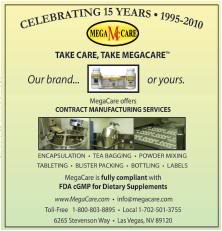 Kathy Lund, vice president of marketing and sales for the ribose ingredient division of Bioenergy Life Science, Inc., Minneapolis, MN, spells out how her company handles raw material manufacturers: "The qualification process in its most complete form consists of three parts: a) A questionnaire completed by the supplier, b) A quality management system self-assessment completed by the supplier, using Bioenergy Life Science's supplier assessment survey form. This is returned, along with the supplier's quality manual and documentation for review, and c) An on-site assessment by Bioenergy Life Science personnel or our authorized agents. Bioenergy Life Science periodically reevaluates suppliers through the use of quality performance data and/or on-site assessments."
Kathy Lund, vice president of marketing and sales for the ribose ingredient division of Bioenergy Life Science, Inc., Minneapolis, MN, spells out how her company handles raw material manufacturers: "The qualification process in its most complete form consists of three parts: a) A questionnaire completed by the supplier, b) A quality management system self-assessment completed by the supplier, using Bioenergy Life Science's supplier assessment survey form. This is returned, along with the supplier's quality manual and documentation for review, and c) An on-site assessment by Bioenergy Life Science personnel or our authorized agents. Bioenergy Life Science periodically reevaluates suppliers through the use of quality performance data and/or on-site assessments."
The bottom line, says Lund, is to offer various layers of quality assurance throughout the supply chain. "Suppliers are responsible for the quality of materials and components provided by their sub-tier suppliers and sub-contractors," says Lund adding, "They must impose controls on their sub-tier suppliers that provide quality results and documentation comparable to the controls applied to suppliers by Bioenergy Life Science."
Dijkstra of InterHealth Nutraceuticals agrees suppliers must be confident that the materials they procure are of a high quality: "InterHealth has established and maintains documented procedures for identifying the material/product by suitable means from receipt and during all stages of production, shipment and measurement requirements. InterHealth only obtains and manufactures its products from approved suppliers. InterHealth has a rigorous supplier's audit program. This procedure also addresses material/product traceability, when required by the customer, and record requirements."
Dijkstra also makes the point that the company has standard operating procedures in place to "simplify the exchange of information with finished product manufacturers." This is key. If a supplier isn't organized enough to give you the information they've collected about the materials they've procured, you may want to think twice about working with them.
Despite the additional time and cost of supplier qualification, Cheryl Sturm, director of marketing at Embria Health Sciences, Ankeny, IA, believes it is well worth it: "Both FDA and industry see the opportunity that qualification can offer in terms of a safer supply chain. Consumer safety must always be the first point for any change. For business, qualification may involve some additional costs, but over time a safe, secure supply chain can be a significant investment that pays back dividends through process and product integrity."
Streamlining Supplier Qualification. The lack of specifics about supplier qualification in the regulations has left many finished manufacturers doing their own thing. Says Brian McNally, president of Stryka Botanics, Hillsborough, NJ, "Virtually all manufacturers take a somewhat different approach on what each sees as important to qualify a raw material supplier. Stryka receives a vast amount of different audit forms, CofA requirements and much more from all our different customers."
At the June 2009 Ingredient Supplier Qualification Workshop (presented by the Joint SIDI working group), the issue of establishing an industry-sponsored ingredient qualification system was raised. One speaker, Mike Bradley of Perrigo, stated that such a program would be advantageous because industry companies aren't clear about FDA's expectations for supplier qualification. Like McNally stated, Bradley felt that companies' efforts at qualification are diverse and often redundant.
Another speaker, Anthony Palmieri of DSM stated that an industry-sponsored supplier qualification program would need to be mandatory in order to be effective and be international in scope.
According to the meeting's minutes, many attendees (which included industry companies, third-party certifiers, trade associations and regulators) agreed that the natural products industry should be proactive and develop an industry-sponsored ingredient supplier verification program. Though the exact methods for creating such a program are still being hashed out, it's likely we'll see an industry group develop such a resource in the near future.
Branding Your Brand
Manufacturers who had a tough 2009 may be considering whether new launches will be formulated with branded or commodity ingredients. Companies weighing this option should know the pros and cons.
A main reason to choose branded, says Capelli, is that they are at the "top of the food chain" and "the ones doing the research, PR, educating and advertising; in short, the branded ingredients are the ones innovating and expanding the entire industry." It's easier to show that a branded ingredient makes good on its health promises if it is backed by studies that use a material with the same fingerprint.
In this vein, manufacturers should understand that marketing a branded ingredient entails more than creating a clever name. "This isn't how it works," says Capelli. "There is a lot of hard work, time and financial investment in creating a branded ingredient."
Moore feels that branding should be reserved for ingredients that truly have something extra to offer. He notes, "Too often, ingredients that are ‘branded' really have no additional value over generic competitors. They simply have a trade name given to them and a logo that accompanies the ingredient." Diligent raw materials suppliers like Stratum, says Moore, built brands on solid intellectual property and their proven ability "to help better address consumer health and nutrition needs than competitive products on the market."
Catching consumers' attention with brands is another plus. Says Lund, "A branded ingredient can assist manufacturers by providing a built-in demand for the product with consumers. As a patent-protected product, Bioenergy Ribose continually looks for ways to increase awareness with the end users."
Sturm of Embria offers some numbers to back this up. "According to the latest Natural Marketing Institute Health and Wellness Trends Database Study, nearly 40% of all vitamin, mineral and herbal supplement purchasers agreed with the statement that a specific branded ingredient prominently displayed on the front of the package increased their likelihood of purchase," she says, adding, "Therefore, strong consumer trust and preference for branded ingredients should not be underestimated."
She puts this point in perspective with an example: the Intel Inside advertising campaign made Intel and its Pentium processor household names in the 1990s.
But Xsto Solutions' Murray points out that this type of success isn't magic; finished products makers need to work for it. "Simply having an ingredient trademarked and calling it by a brand name does not bring the added value. It takes significant work and resources to communicate the value to the consumers, who in turn will purchase the proprietary ingredient in their favorite retail brand of supplement or beverage," he says.
Determining whether or not you have the capability to give it the marketing it needs could be a deciding factor for whether or not to go ahead with using a branded ingredient. Says Fox of National Enzyme, "You must invest time, energy and money in a marketing campaign that reaches both the end consumer as well as other businesses. It also requires a great deal of patience and determination due to the commonly delayed return on investment."
This effort should include some fact checking. Advises Ishaq of BioCell Technology, "Look into a branded ingredient's clinical research to ensure that structure-function claims are legitimate."
One downside of brand names is lack of competition, says McNally. "Wi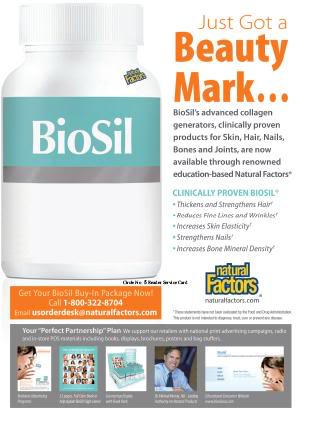 th a lack of alternative suppliers, the reliance on just one source for an ingredient poses many possible problems in costs, scheduling and more. Good purchasing practices always dictates having more than one supplier for an ingredient. This is not the case when using a branded ingredient."
th a lack of alternative suppliers, the reliance on just one source for an ingredient poses many possible problems in costs, scheduling and more. Good purchasing practices always dictates having more than one supplier for an ingredient. This is not the case when using a branded ingredient."
Pontiakos also says that commodity ingredients have a wide range of literature that, in many cases, has been in place for years.
Murray also warns that too many similar branded ingredients defeats the purpose of branding: "The disadvantage is it tends to level the playing field when the ingredient is available from numerous sources and may diminish the uniqueness in a premium marketing line." WF
Reference
- Mintel, "Sacred Foods and Food Traditions in the United States 2008," www.researchandmarkets.com/reports/c83657, accessed Nov. 23, 2009.
Published in WholeFoods Magazine, Jan. 2010

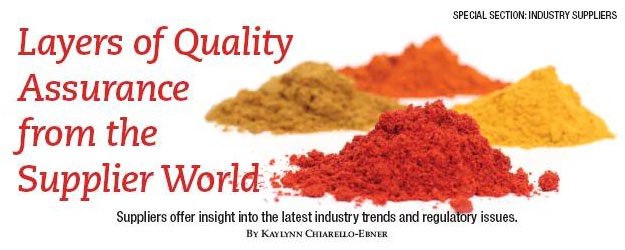
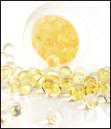 In June 2009, a citizen petition was filed on behalf of OVOS Natural Health Inc. asking the U.S. Food and Drug Administration (FDA) to allow the marketing of a new dietary ingredient (NDI). The ingredient in question is a kelp-derived amino acid called homotaurine that was previously studied by BELLUS (the parent company of OVOS) for preserving memory functions. Under the Federal Food, Drug, and Cosmetic Act, authorization is required by FDA before bringing to market ingredients that have had such in-depth scientific investigation.
In June 2009, a citizen petition was filed on behalf of OVOS Natural Health Inc. asking the U.S. Food and Drug Administration (FDA) to allow the marketing of a new dietary ingredient (NDI). The ingredient in question is a kelp-derived amino acid called homotaurine that was previously studied by BELLUS (the parent company of OVOS) for preserving memory functions. Under the Federal Food, Drug, and Cosmetic Act, authorization is required by FDA before bringing to market ingredients that have had such in-depth scientific investigation. 







